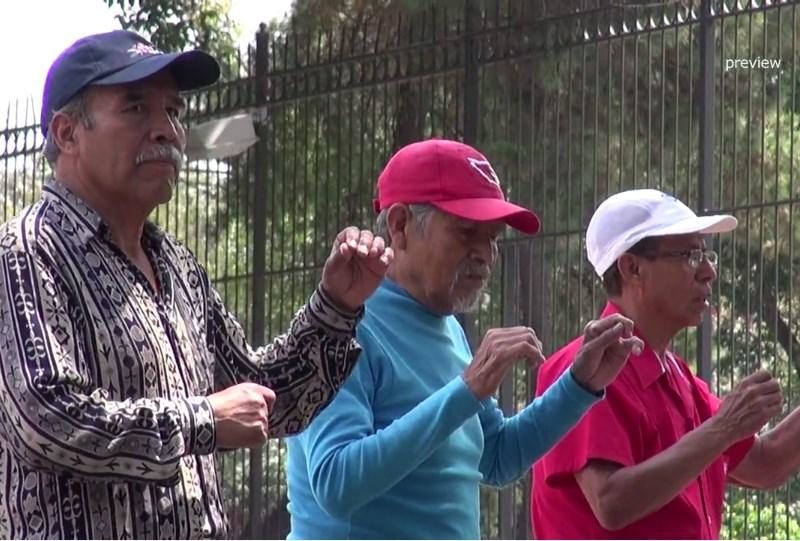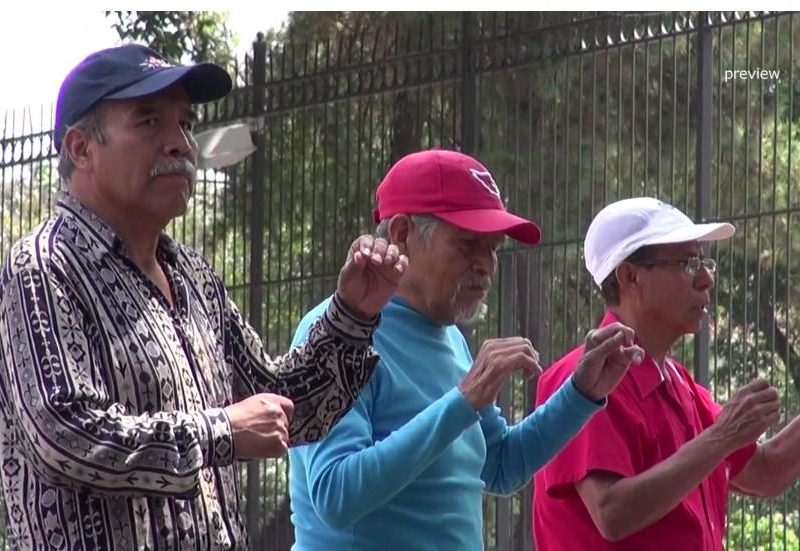Ghost Dance
Somewhere outdoors. Three older men are dancing. They seem absorbed in what they’re doing, their movements follow the same rhythm and choreography. Anyhow, something is different. This lies not only in the accompanying music, which has no connection to the dance movements, but also in the hermeticism of the scenery. The movement appears strangely formalized and if you look closely you’ll recognize that the scene, by means of video montage, is permanently repeated.
Through the artistic intervention, the freedom of the dance collides with the strength of a ritual. In the juxtaposition of play and form, freedom and rule, the video refers to the essence of cultural rites. Freedom evolves from rules just as ecstasy is, strictly understood, a result of asceticism. Raster and revolt – both belong together. This duality is fundamental to every religion, its roots lie in old cultic ceremonies like the ghost dance which the native Americans used to put themselves into a trance in order to get in contact with the dead. Against this background, GHOST DANCE bares a deeper layer of meaning beyond the image surface. Once you take this perspective, then each detail integrates into the overall picture: the fence which contains the scene and the wild-growing grass behind, the three men with their typical American baseball caps and their visible indigenous ancestry. This minimal setting exposes a double bind and continues the interplay between play and form, which underlies the repeated dancing on the image plane, on the perception layer.
Vedder Maria


